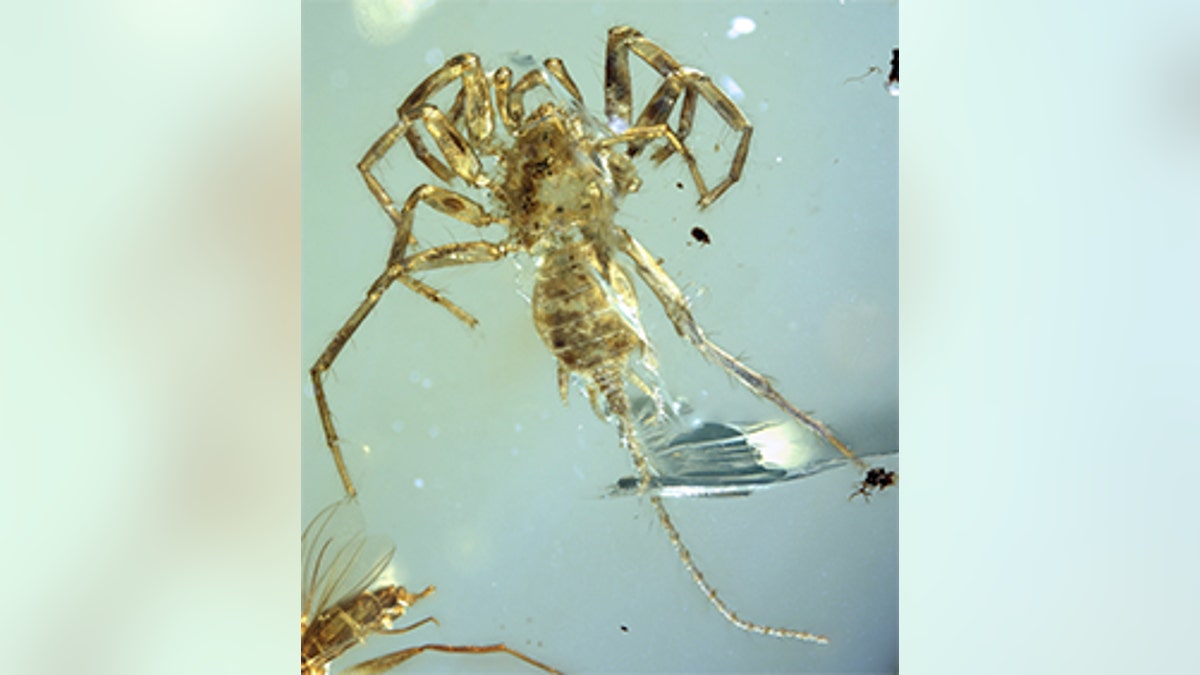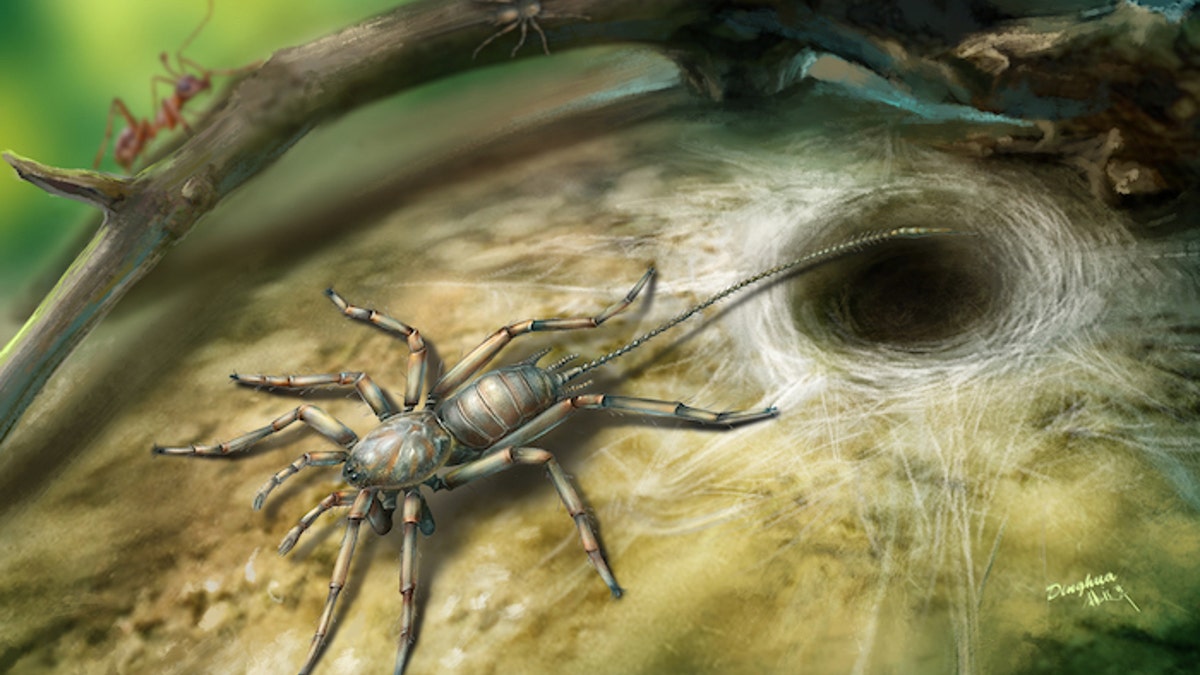
The entire specimen in dorsal ventral view. (Credit: University of Kansas)
A brand new species of arachnid that looks like a spider with a tail has been discovered in Myanmar.
The eight-legged creepy crawly is estimated to have scuttled along the forest floors as far back as 100 million years ago.
Scientists found the creature trapped in a piece of amber from the mid-Cretaceous period, and now believe that it's an entirely new species.
The freaky discovery was made by an international team that included the University of Kansas, and was published in Monday's Nature Ecology & Evolution journal.
KU's Paul Selden said: "There's been a lot of amber being produced from northern Myanmar and its interest stepped up about ten years ago when it was discovered this amber was mid-Cretaceous; therefore, all the insects found in it were much older than first thought."
"It's been coming into China where dealers have been selling to research institutions."

(The new animal resembles a spider in having fangs, male pedipalps, four walking legs and silk-producing spinnerets at its rear. However, it also bears a long flagellum or tail. No living spider has a tail. Credit: Dinghua Yang)
The new creature looks just like a spider, with common body parts including fangs and four legs that are specifically used for walking.
But it's unique in that it has a "long flagellum, or tail", which is not something found on any living spider.
Four new specimens of this mysterious species – which has been dubbed Chimerarachne Yingi – have been found so far.
Their bodies measure around 2.5 millimetres, but their tales are even longer at around 3 millimetres.
Explaining the tail, Selden says: "Any sort of flagelliform appendage tends to be like an antenna."
"It's for sensing the environment. Animals that have a long whippy tail tend to have it for sensory purposes."
According to Selden, it's difficult to work out how the tailed spider spent its days, but there are some clues.
"We can only speculate that, because it was trapped in amber, we assume it was living on or around tree trunks."
"Amber is fossilised resin, so for a spider to have become trapped, it may well have lived under bark or in the moss at the foot of a tree."
We do know that the spider has spinnerets, which can be used to produce silk.
But Selden says this doesn't necessarily mean the ancient spider built and lived on webs.
"Spinnerets are used to produce silk but for a whole host of reasons – to wrap eggs, to make burrows, to make sleeping hammocks or just to leave behind trails."
"If they live in burrows and leave, they leave a trail so they can find their way back. These all evolved before spiders made it up into the air and made insect traps."
"Spiders went up into the air when the insects went up into the air. I presume that it didn't make webs that stretched across bushes."
"However, like all spiders it would have been a carnivore and would have eaten insect eggs, I imagine."
It's also possible that tailed spiders aren't completely extinct – they just might not have been discovered yet.
"We know a lot about the Burmese biota during the Cretaceous."
"It was a pretty good tropical rainforest, and there are a great many other arachnids we know were there, particularly spiders, that are very similar to the ones you find today in the southeast Asian rainforest."
"It makes us wonder if these may still be alive today. We haven't found them, but some of these forests aren't that well-studied, and it's only a tiny creature."
This story originally appeared in The Sun.




















